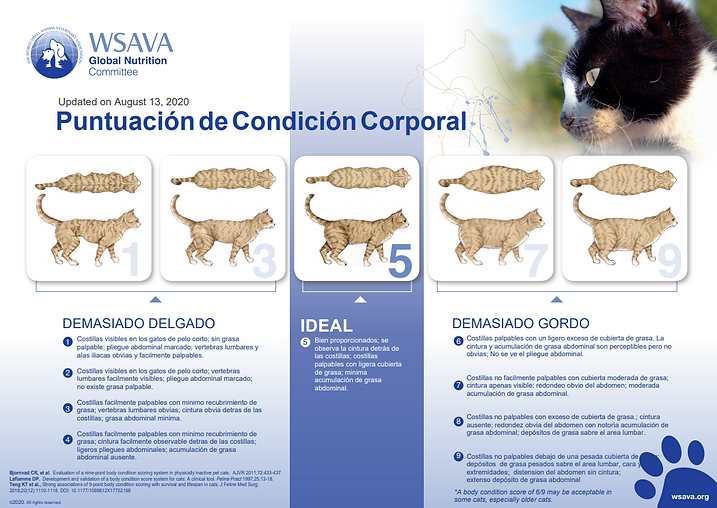Obesity and joint pain in dogs and cats: How nutrition can change everything

Imagen de FreePik
INTRODUCTION
I'm going to tell you something I see every day, both at work and on the street: dogs exhausted from walks, cats unable to groom their rear ends, and owners who feel their companion is "aging" prematurely. But often, the problem isn't age... it's weight!
Obesity in animals not only affects their appearance, which can sometimes seem ridiculous, but also has a direct impact on their health. These pets are more likely to develop serious metabolic diseases such as diabetes, heart, respiratory, and liver diseases , and some types of cancer , in addition to predisposing to and aggravating osteoarthritis, dysplasia, and chronic pain.
Recent studies indicate that 59% of dogs and 61% of cats are overweight or obese, and many owners are unaware of this.
And worst of all: IT CAN REDUCE YOUR LIFE EXPECTANCY BY UP TO 2 YEARS.
CREANCIA LIMITANTE: cuanto más come, más feliz está.
CRUDA REALIDAD: la felicidad no depende directamente de la cantidad de alimento que le proporcionamos, si no de su entorno, su bienestar emocional y físico. Como no tenemos tiempo para dedicarle a la actividad física que necesita, reforzamos ese vínculo sin ofrecerle alternativas que realmente le hagan sentir bien. Y no es por juzgar, lo hacemos todo.
SOLUCIÓN: cuidar la alimentación y la actividad física, porque vamos a poder muchas más cosas con ellos, va a tener mejor caracter y va a estar más contento.
WHAT HAPPENS IN THE BODY WHEN YOU ARE OVERWEIGHT
When an animal has extra weight, it’s not only the joints that suffer. Too much body fat can affect the whole body in a silent but serious way:
🦴 Joints under pressure Extra weight puts more stress on the joints. This makes the cartilage wear down faster, causes inflammation, and can lead to pain when moving. In animals that already have a risk of joint problems like dysplasia or arthritis, being overweight can turn a mild condition into a painful disease.
🧬 Chronic inflammation Fat is not just “stored energy.” It’s an active tissue that makes inflammatory substances (called cytokines) that affect the whole body. This inflammation can make other health problems worse and slow down healing after injuries or surgery.
💪 Loss of muscle mass Strangely, many overweight animals lose muscle. This is called “hidden sarcopenia”: the animal looks strong, but has lost important muscle that helps support the body. This makes them weaker, less mobile, and slower to recover.
🧠 Changes in behavior Pain, discomfort, and low energy can make the animal more tired, grumpy, or inactive. Sometimes, the owner thinks this is “old age,” but it’s really a result of being overweight.
HOW TO KNOW IF YOUR PET IS AT RISK
The WSAVA Guide gives us an educational chart that anyone at home can use to check their pet’s body condition. This tool is visual, clear, and easy to use—even without veterinary training.
🐶 How Does the Chart Work?
The WSAVA scale goes from 1 to 9, where:
-
1–3 means underweight The pet is too thin and may have health problems from lack of fat and muscle.
-
4–5 is the ideal range The pet has a healthy weight, with visible waist and ribs that can be felt but not seen.
-
6–9 shows overweight or obesity The pet has too much fat, no visible waist, and may have trouble moving or breathing.


🔍 What Should You Look For?
-
Ribs: Can you feel the ribs easily without a thick layer of fat? In a healthy pet, ribs should be easy to touch but not clearly visible.
-
Waist: Is there a visible waist when you look from above or the side? A clear waist means the pet is likely in a healthy weight range.
-
Abdomen: Is there fat around the belly, or is it tucked up? A tucked abdomen (no hanging belly) is a sign of good body condition.
-
EXPERT TRICK FOR CAT
Place your cat stretched out, standing or lying down, and observe its silhouette.
👉 If it's straight : we're in shape!
🍐 If it reminds you of a pear … Houston, we have a pear cat (problem)!


WHAT CAN WE DO THEN?
No shortcuts, but real solutions.
The keys: proper nutrition and appropriate exercise.
From my experience, I know how hard it can be to help a pet lose weight. I’ve seen the frustration of guardians who try and fail, the sadness when they feel they can’t share food at the table anymore… and then comes the question: What’s the point of living if they can’t enjoy it?
I also share that joy when they eat with pleasure—because that strengthens our bond. But we must understand that their health depends on us, and yes, there are ways to reach a healthy weight without suffering.
Light or diet kibble can be a real challenge. But with a natural diet, the process becomes easier, more enjoyable… and they absolutely love it!
Add in simple activities like walking or playing, but with a consistent routine, with defined times adapted to their rhythm. That way, little by little, the change becomes part of their everyday life.
Would you like me to guide you? I’d be delighted to walk you through it, step by step.
